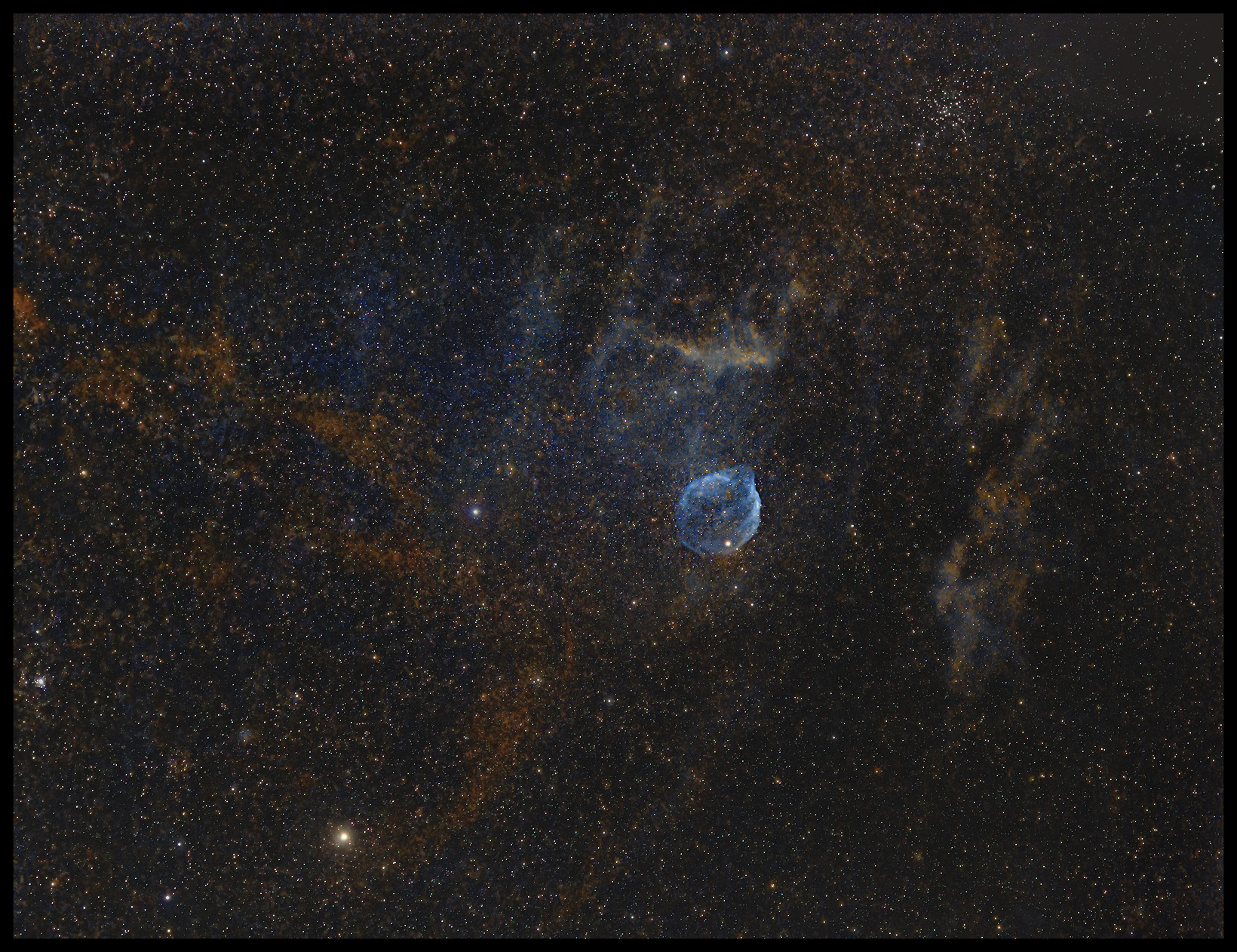The Starry Night, 272 :: home :: |
Inside of a dog...
That's M41 at upper right, Delta Canis Majoris ("Wezen") at lower left. Lots of Lynd Bright Nebulae lace the field. There's a lot of physics going on this field. The central star of the blue bauble here is EZ CMa, a Wolf-Rayet star with a surface temperature of about 89,000 degrees Kelvin. The ultraviolet radiation from the central star as well as the collision of a fierce stellar wind with the interstellar medium produces the blue shell. Stars on the far left edge include Tau CMa (dominating the small cluster NGC 2362) and, just above it, 29 CMa. You have no idea, and I am not inclined to describe, the number of versions and treatments I have been through with this image. It wouldn't hurt to double the exposure time. Or more. Through clearer air. Working so far left on the histogram is tough. (Hint: channel by channel noise control is sometimes useful.)
2025/01/29. A dark night in the Richlands with Bea and Jeffrey gave me a chance to try a broadband image of Rigel and environs. I set up in bright twilight and used a Bahtinov mask to focus on Rigel. That's the first time I've tried the mask with the 105mm; it works nicely. Then I let the 1600MC run until we headed home about 10:00PM. I tossed the first 30 frames and used the next 150 with the usual aggressive processing (BlurX, Starnet2, noise reduction, starless blend, faux flats, etc etc) to get this:
Cloudy weather looms. Time for a design challenge: I never want to see a fuzzy image from the 400mm again.
:: top :: |
© 2025, David Cortner

